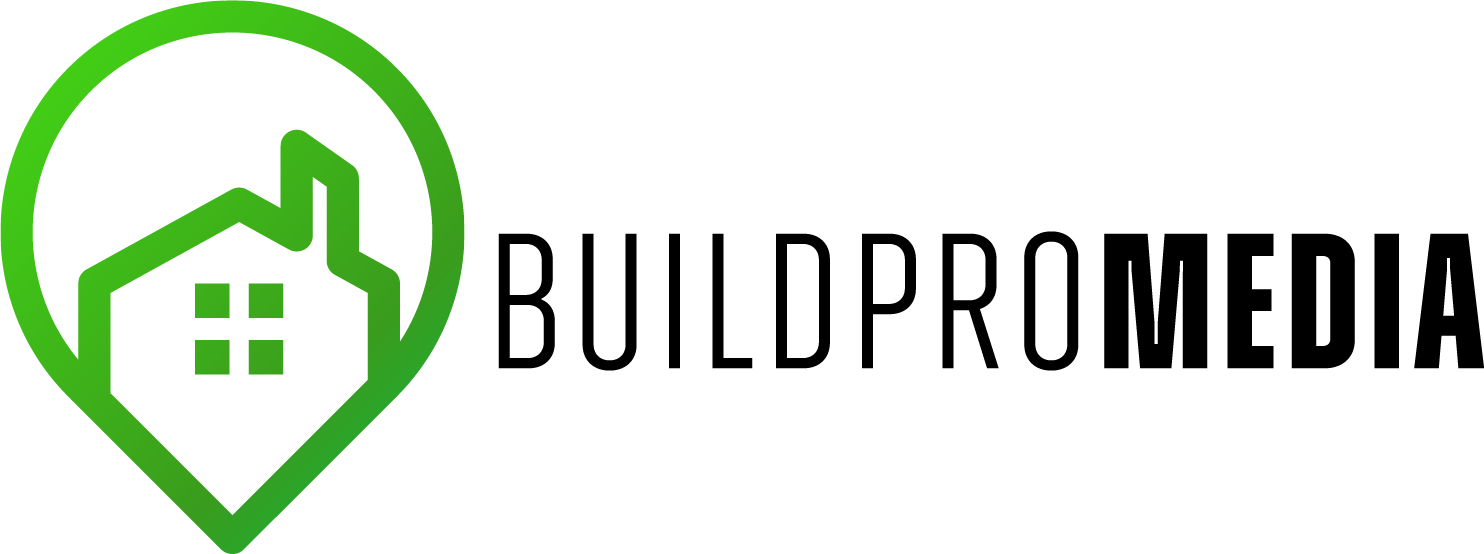When someone’s heat goes out or a pipe bursts, they’re not doing hours of research—they’re pulling out their phone and searching Google. If your business isn’t showing up in those local results, you’re missing out on some of the easiest, highest-intent leads out there.
That’s where local SEO comes in.
Local SEO helps your business appear in search results when people nearby are looking for the exact services you provide. It’s how you compete with bigger companies, stay visible in your community, and turn online searches into real-life customers.
And the best part? You don’t need a marketing degree or a big budget to get started. You just need to follow the right steps—and that’s exactly what this checklist is for.
Let’s break it down and help your business get found, get chosen, and get growing.
1. Claim and Optimize Your Google Business Profile
If you only do one thing on this checklist—do this. Your Google Business Profile (formerly Google My Business) is one of the most powerful tools you have for showing up in local search results, especially on Google Maps and in the “local pack.”
But claiming your profile isn’t enough. You’ve got to optimize it.
Start by making sure every section is filled out completely and accurately: business name, address, phone number, service area, hours, website, and business category. Use real photos of your team, your trucks, and your work—not stock images. Write a business description that includes what you do and where you do it (naturally worked-in keywords like “HVAC services in Tulsa” or “emergency plumbing in Edmond” are a bonus).
Then keep it fresh. Post updates, add new photos, and respond to every review—even the less-than-great ones. Google notices when your profile is active, and so do potential customers.
A well-optimized profile builds trust and gets you more visibility. It’s one of the easiest ways to get found fast by people searching in your area.
2. Keep Your NAP (Name, Address, Phone) Consistent Everywhere
This one sounds simple, but it’s one of the most common mistakes we see.
Search engines like Google rely on consistency to trust your business info. If your company name is listed one way on your website, another way on Yelp, and a third version on Facebook, it creates confusion—and that can hurt your rankings.
Here’s what to check:
- Make sure your business name, address, and phone number (NAP) are exactly the same across all platforms. That includes your website, Google Business Profile, Facebook, Yelp, Angi, BBB, and any other directory you’re listed on.
- Use the same formatting every time (e.g., “123 E Main St” vs “123 East Main Street”—pick one and stick with it).
- Always use a local phone number if possible. Google tends to favor local contact info over 800 numbers or call centers.
This might seem like a small detail, but for local SEO, the little things add up fast.
3. Build Location-Specific Website Pages
If you serve more than one city, your website should reflect that—and not just in a footnote.
Creating dedicated service area pages helps you rank in nearby towns, suburbs, or neighborhoods that your ideal customers are searching from. It also gives you a chance to speak directly to local needs (and slip in those juicy keywords Google loves).
Instead of saying “We serve the greater metro area,” create individual pages like:
- “HVAC Repair in Round Rock”
- “Plumbing Services in Norman”
- “Roof Replacement in Franklin”
Each page should have unique content—not just copied and pasted text with a city name swapped in. Talk about the kinds of problems homeowners in that area face. Mention neighborhoods or landmarks. Keep it helpful and natural, not robotic.
The goal is simple: show up when someone nearby searches for what you offer—and make it easy for them to know you serve their exact area.
4. Collect and Respond to Reviews
Reviews aren’t just for building trust—they’re a huge part of local SEO. Google favors businesses with consistent, positive reviews from real customers. If you’re not actively collecting them, you’re missing out on both credibility and visibility.
Make it part of your process to ask for a review after every job. The best time? Right after the work is done, when the customer is happy and things are fresh. A simple text or email with a direct link to your Google profile makes it easy.
And don’t just collect reviews—respond to them. Thank your happy customers and address any negative feedback professionally. Google sees it as a sign that you’re active and engaged, and potential customers will see it as proof that you care about the service you deliver.
Pro tip: Highlight great reviews on your website and in social posts. It’s free marketing, and it reinforces your reputation every time someone sees it.
5. Add Local Schema Markup to Your Website
This one sounds technical—but it’s a behind-the-scenes power move for your local SEO.
Schema markup is a type of code that helps search engines understand important details about your business, like where you’re located, what services you offer, and how to contact you. It doesn’t change how your website looks, but it can absolutely change how it ranks.
By adding local business schema to your site, you’re giving Google exactly the information it needs to index your business correctly in your geographic area. This makes it more likely your website will show up in rich results and local searches.
Some key details to include in your schema:
- Business name
- Address
- Phone number
- Hours
- Services offered
- Service areas
If you’re working with a web developer or digital marketing team (like BuildPro Media!), ask them to check your schema setup. It’s one of those small behind-the-scenes things that can make a big difference over time.
6. Create Location-Based Content That Helps People
If you want to show up in local searches, give Google what it loves: useful, relevant content that speaks directly to your customers—where they live.
That doesn’t mean writing blog posts just to check a box. It means creating content that answers real questions your customers are actually asking in your service area. Think seasonal tips, maintenance advice, or how-to guides tailored to your climate, your services, and your city.
Examples of content that can drive traffic and leads:
- “How to Prep Your HVAC System for Summer in Denton”
- “What to Expect During a Roof Replacement in Hendersonville”
- “The Real Cost of Water Heater Repair in Overland Park”
Use local phrases naturally in your content—mention neighborhoods, weather patterns, or events that homeowners will recognize. Not only does this help with SEO, but it also shows readers you’re truly local, not just pretending to be.
The more helpful and location-specific your content is, the more likely Google will reward you with higher rankings—and the more likely customers will trust you with their business.
7. Optimize for Mobile (Because Most Searches Happen There)
When someone’s AC goes out or their toilet is overflowing, they’re not booting up a desktop—they’re grabbing their phone. If your website isn’t mobile-friendly, you’re losing potential leads before they even see your services.
A mobile-optimized site isn’t just a nice-to-have anymore—it’s essential for ranking in local search and converting visitors into customers.
Here’s what to check:
- Does your site load quickly on mobile? (Ideally under 3 seconds)
- Is the text easy to read without zooming?
- Can users tap to call or request a quote in just a couple clicks?
- Is your contact form short, simple, and phone-friendly?
You could be the best contractor in town—but if your website frustrates users on their phones, they’ll bounce right to the next name on the list.
Make sure your site works smoothly on any screen, so you don’t miss the leads that matter most.
8. Earn Local Backlinks
Backlinks—links from other websites to yours—are one of the strongest signals Google uses to determine your credibility. And when those links come from local sources? Even better.
Local backlinks help prove that you’re a trusted part of your community. They’re like digital referrals—and Google takes notice.
Here’s how to start earning them:
- Join your local chamber of commerce and make sure your website is listed in their online directory.
- Sponsor a local event, sports team, or charity and ask for a link from their website.
Collaborate with local bloggers, real estate agents, or news outlets—offer a tip, provide a quote, or contribute an article in exchange for a link. - List your business on local directories and industry-specific websites.
You don’t need dozens of backlinks to make an impact—just a few high-quality, local ones can give your rankings a healthy boost.
9. Track Your Progress with the Right Tools
Local SEO isn’t a “set it and forget it” thing—you’ve got to keep an eye on what’s working and what’s not. Tracking your progress helps you fine-tune your strategy, measure ROI, and stay ahead of competitors.
Luckily, you don’t need to guess. There are plenty of tools (free and paid) that can help.
Here’s what to use:
- Google Business Profile Insights: See how many calls, website visits, and direction requests you’re getting directly from your listing.
- Google Analytics: Track traffic to your site, popular pages, and where your visitors are coming from.
- Ahrefs: A powerhouse tool that lets you monitor keyword rankings, spy on competitors, and identify backlink opportunities.
- BrightLocal or Whitespark: Great for tracking local keyword rankings, citations, and review performance in one dashboard.
Set a monthly reminder to check your data. What pages are getting traffic? Are your rankings improving for specific cities or services? Use what you learn to double down on what’s working—and adjust where needed.
You can’t improve what you’re not tracking. A few minutes each month can lead to way better results over time.
Wrap Up: Local SEO Doesn’t Have to Be Complicated—It Just Has to Be Done
If you’ve made it this far, congrats—you now have a full game plan for getting your home service business found by more people in your area. Local SEO isn’t about chasing trends or trying to outsmart Google. It’s about showing up consistently, building trust, and making it easy for local customers to choose you over the competition.
From optimizing your Google Business Profile to earning local backlinks and tracking performance with tools like Ahrefs, every step on this checklist moves the needle. And the best part? Most of it can be done without a massive budget—just a little time and consistency.
Need a partner to handle this for you? At BuildPro Media, we specialize in helping home service pros rank higher, look better online, and grow their business with smart, local-first marketing strategies. Whether you’re just getting started or ready to take your SEO to the next level, we’ve got your back. Contact us today and let’s build your local SEO plan.

